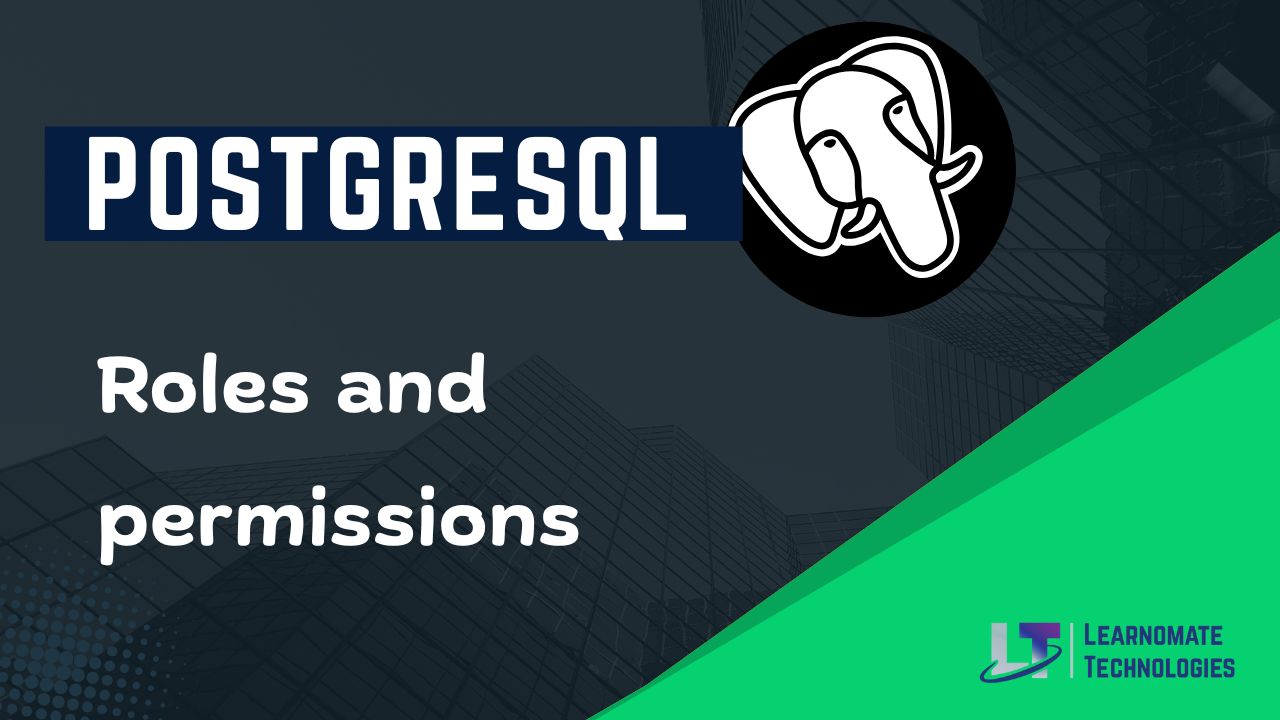Roles and permissions in PostgreSQL
Introduction
Managing roles and permissions is one of the most important tasks for any PostgreSQL DBA.
It’s not just about granting access — it’s about controlling security, ensuring accountability, and maintaining data integrity.
If you’re looking to learn PostgreSQL at an advanced level, mastering roles and permissions will make you stand out as a professional database administrator who knows how to balance security with accessibility.
What Are Roles in PostgreSQL?
In PostgreSQL, roles represent both users and groups.
Unlike some databases that separate users and groups, PostgreSQL uses the role concept for both, making access management flexible and consistent.
You can create roles with or without login privileges.
Example:
CREATE ROLE analyst LOGIN PASSWORD 'data@123';
-
A login role can connect to the database.
-
A non-login role is often used as a group role, which other users can inherit privileges from.
Understanding Privileges in PostgreSQL
Privileges define what actions a role can perform in the database.
Common privileges include:
-
SELECT – Read data from a table
-
INSERT – Add new rows
-
UPDATE – Modify existing rows
-
DELETE – Remove rows
-
CONNECT – Connect to a specific database
-
USAGE – Access schemas or sequences
Granting privileges:
GRANT SELECT, INSERT ON employees TO analyst;
\du
2 . View role details:
SELECT * FROM pg_roles;
3 .Change role attributes:
4 . Drop a role:
5 . Check access for auditing:
Conclusion
Effective role and permission management ensures PostgreSQL databases remain secure, efficient, and scalable.
As you learn PostgreSQL, understanding how to structure roles, assign privileges, and apply best practices will help you become a trusted DBA capable of managing production-grade systems.
Start small, experiment with different privilege combinations, and build a solid security foundation for your PostgreSQL environment.
At Learnomate Technologies, we make sure you not only understand such cutting-edge features but also know how to implement them in real-world projects. Whether you’re a beginner looking to break into the database world or an experienced professional upgrading your skillset—we’ve got your back with the most practical, hands-on training in Oracle technologies.








Let’s keep learning, exploring, and growing together. Because staying curious is the first step to staying ahead.
Happy learning!
ANKUSH


